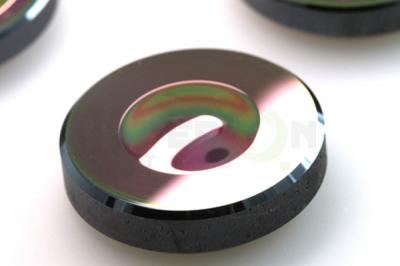An achromatic lens, also called achromatic, is usually composed of two optical elements joined together. These two optical elements are usually a positive low index (crown) element and a negative high index (flint) element. Compared with a single lens composed of only a single piece of glass, the additional design freedom provided by the use of a two-lens design can further optimize performance. Therefore, achromatic lenses will have obvious advantages over single lenses of similar diameter and focal length.
There are many configurations of the apochromatic lens. The most common configurations are positive lenses, negative lenses, triplet lenses, and aspheric lenses. Note that it can be doublet (two elements) or triplet (three elements). The number of elements has nothing to do with the amount of light corrected. In other words, achromatic lenses designed for visible light wavelengths correct for red and blue, regardless of the double or triple configuration.
1. Improved multi-color imaging. For multi-color "white light" imaging, achromatic lenses are better than simple lenses. The two elements that make up an achromatic lens (literally means "lens without color") are paired together because they can correct the inherent color separation of glass. After eliminating the problematic chromatic aberration, achromatic lenses become the most cost-effective means to achieve good multicolor illumination and imaging.
2. Correction of spherical aberration and coaxial coma. The absence of spherical aberration and coma means better coaxial performance at larger apertures. Unlike simple lenses, achromatic lenses always provide a smaller spot size and excellent images without reducing the clear aperture.
3. Brighter images and better energy throughput. Since the on-axis performance of the achromatic lens does not decrease as the clear aperture increases, there is no need to "stop" the optical system. "Shrinking" the aperture refers to reducing its size, such as through a pinhole or iris aperture, to improve overall performance. Utilizing the entire clear aperture, achromatic lenses and achromatic lens systems are faster, more efficient, and more powerful than equivalent systems using single lenses.

 Call us on:
Call us on:  Email us:
Email us:  R&D Center: 9B-4F 401,No.1 Qingnian Road Liando U Valley,Yuhua International Wisdom Valley, Nanjing, 210039 China
R&D Center: 9B-4F 401,No.1 Qingnian Road Liando U Valley,Yuhua International Wisdom Valley, Nanjing, 210039 China









 English
English  cn
cn  de
de  es
es  fr
fr 


